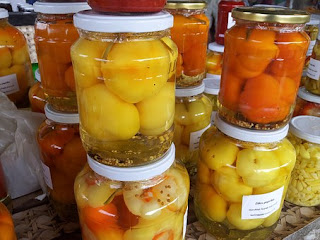The
Asia Pacific and Latin America canned preserved food market is
expected to reach US$38.1 bn by the end of 2021. This market was
valued at US$24.4 bn in 2014 and is expected to progress at a CAGR of
6.40% within a forecast period of 2015 to 2021. The forecast period
of this market is discussed in a new research report released by
Transparency Market Research, titled “Canned Preserved Food Market
- Asia Pacific and Latin America Industry Analysis, Size, Share,
Growth, Trends and Forecast, 2015 - 2021.” The report provides
details on how the current socioeconomic trends are affecting the
sales of canned preserved goods in these two major developing
regions.
According
to the report, the key driver of the Asia
Pacific and Latin America canned preserved food market is the
extended shelf life of perishable foods. This allows consumers to
store the foods for longer durations and use them whenever required.
The economic situation in developing economies is drastically
changing as rapid urbanization and industrialization are allowing a
high number of citizens to lead a modern lifestyle with high
disposable incomes and hectic schedules. Therefore, a larger number
of consumers are preferring to purchase canned foods over fresh
foods.
On
the other hand, the use of excessive amounts of salt, sugar, and
other preservatives are hindering this market. The excessive
consumption of any of these preservatives, especially salt, can have
a negative impact on the consumer’s health. Salt is one of the most
commonly used preservatives and is highly common in canned foods.
High consumption of canned foods will significantly ramp up the salt
intake of an individual, leaving him or her susceptible to the
relevant health complications.
The
Centers for Disease Control and Prevention has already released
warnings regarding the excess consumption of salt through canned and
preserved foods. It can lead to complications including heart
diseases and high blood pressure, in addition to calcium deprivation
and increased frequency of urination due to low water retention
levels.
Fill
the form for an exclusive sample of this report @
http://www.transparencymarketresearch.com/sample/sample.php?flag=S&rep_id=7610
The
manufacturers and distributors currently operating in the Asia
Pacific and Latin America canned preserved food market are searching
for improved capacities. The current penetration rate of players in
these regions is very low. In order to increase their consumer base,
the products need to be made cheaper and available in a larger
variety. There are large untapped regions and consumer demographics
still left to explore for players, and these regions present major
opportunities.
The
report reveals that the Asia Pacific and Latin America canned
preserved food market was led by canned fish in terms of consumption.
In terms of regions, the overall consumption of canned preserved
foods is expected to be higher in Asia Pacific than in Latin America,
with India and China being the top contributors to the demand.
The
key players in the Asia Pacific and Latin America canned preserved
food market include H.J. Heinz Company, DelMonte Pacific Ltd., B&G
Food Holdings Corporation, MTR Foods Pvt. Ltd., and ConAgra Foods
Inc.
Key
segments of the Asia Pacific and Latin America Canned Preserved Food
Market
Asia
Pacific and Latin America Canned Preserved Food Market by Geography:
Asia
Pacific
- India
- China
- Rest of Asia Pacific
Latin
America
- Brazil
- Argentina
- Chile
- Rest of Latin America

No comments:
Post a Comment